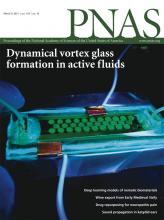|
Authors
Mitra, Sirsha; Estrada-Tejedor, Roger ; Volke, Daniel C.; Phillips, Michael A.; Gershenzon, Jonathan; Wright, Louwrance P. ; Volke, Daniel C.; Phillips, Michael A.; Gershenzon, Jonathan; Wright, Louwrance P.
|
Abstract
Insect damage to plants is known to up-regulate defense and down-regulate growth processes. While there are frequent reports about up-regulation of defense signaling and production of defense metabolites in response to herbivory, much less is understood about the mechanisms by which growth and carbon assimilation are down-regulated. Here we demonstrate that insect herbivory down-regulates the 2-C-methyl-D-erythritol-4-phosphate (MEP) pathway in Arabidopsis (Arabidopsis thaliana), a pathway making primarily metabolites for use in photosynthesis. Simulated feeding by the generalist herbivore Spodoptera littoralis suppressed flux through the MEP pathway and decreased steady-state levels of the intermediate 1-deoxy-D-xylulose 5-phosphate (DXP). Simulated herbivory also increased reactive oxygen species content which caused the conversion of β-carotene to β-cyclocitral (βCC). This volatile oxidation product affected the MEP pathway by directly inhibiting DXP synthase (DXS), the rate-controlling enzyme of the MEP pathway in Arabidopsis and inducing plant resistance against S. littoralis. βCC inhibited both DXS transcript accumulation and DXS activity. Molecular models suggested that βCC binds to DXS at the binding site for the thymine pyrophosphate cofactor and blocks catalysis, which was confirmed by direct assays of βCC with the purified DXS protein in vitro. Another intermediate of the MEP pathway, 2-C-methyl-D-erythritol-2, 4-cyclodiphosphate, which is known to stimulate salicylate defense signaling, showed greater accumulation and enhanced export out of the plastid in response to simulated herbivory. Together, our work implicates βCC as a signal of herbivore damage in Arabidopsis that increases defense and decreases flux through the MEP pathway, a pathway involved in growth and carbon assimilation.
|

WoS
Scopus
Altmetrics
  
|
|
Journal
Proceedings of the National Academy of Sciences of the United States of America, 9 March 2021, v.118, n.10, e2008747118
|
